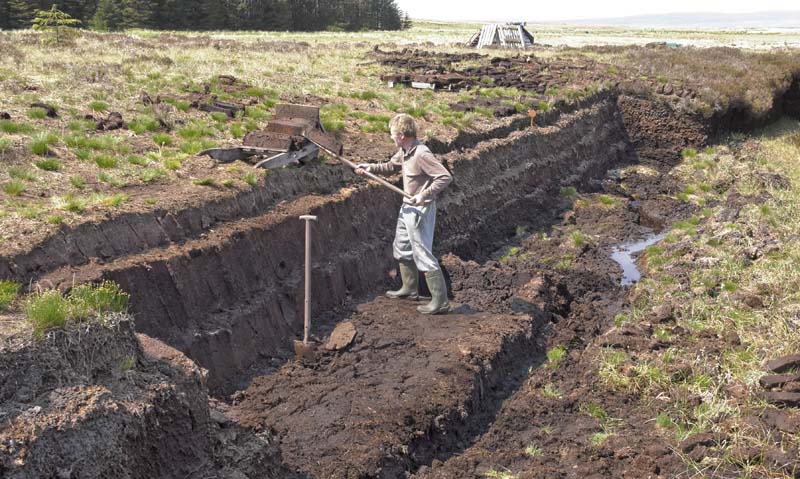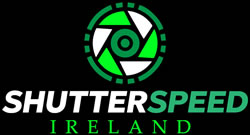Turf Cutting in Ireland: A Comprehensive Overview
Turf cutting has been a cornerstone of Irish rural life and culture for centuries, offering not only a vital source of fuel but also creating a deep connection between communities and their natural landscapes. This comprehensive exploration will delve into the history, techniques, environmental implications, cultural significance, and modern challenges of turf cutting in Ireland, providing a detailed view of this traditional practice and its evolving role in contemporary society.

Historical Context of Turf Cutting in Ireland
Ancient Roots
The practice of cutting turf, or harvesting peat, is deeply embedded in Irish history. Peatlands, which cover approximately 20% of Ireland, have been a source of fuel since prehistoric times. Archaeological findings suggest that early Irish societies used peat for cooking and heating as far back as the Neolithic period, around 4000 BC.
As communities settled in these rich, boggy landscapes, they developed methods to access this vital resource. Tools were rudimentary; simple wooden implements sufficed for the early turf cutters. Over time, as populations grew and technology evolved, the methods of harvesting turf became more sophisticated.
The Rise of Turf as a Primary Fuel Source
By the 18th century, peat had become the predominant source of fuel for many rural households in Ireland. The demand for fuel increased dramatically during the Industrial Revolution, with turf being seen as an essential resource for both domestic and industrial uses. This era marked a shift in turf cutting practices as mechanization began to play a role in the extraction process.

Mechanization of Turf Cutting
The 19th century saw the advent of mechanized tools, such as turf-cutting machines, which revolutionized the industry. These machines enabled large quantities of turf to be harvested quickly and efficiently, making turf more accessible to a wider population. However, this shift towards mechanization also led to significant environmental concerns, as more peatlands were drained and harvested than ever before.
Traditional Turf Cutting Methods
Turf cutting has traditionally involved several steps, often carried out communally.
The Process of Turf Cutting
Site Selection: The first step is selecting a suitable bog. Traditionally, turf cutters would choose bogs based on accessibility, the quality of the peat, and the surrounding environment. Community knowledge of local bogs played a crucial role in this selection process.
Cutting the Turf: The primary tool for cutting turf is the slean, a long-handled spade designed for slicing through soft peat. The cutter stands over the selected area and uses the slean to create rectangular blocks of turf, referred to as turf sods.
Lifting and Stacking: Once cut, the turf sods are lifted and stacked in a manner that allows for air circulation, facilitating drying. Traditionally, this was done manually, and local customs dictated how stacks were organized.
Drying the Turf: The dried turf, known as milled turf, is essential for efficient burning. It is left in the sun and wind to dry for several weeks, often on raised platforms called turf banks.
Transportation: Once dried, turf is transported back to homes or storage areas. Traditionally, this was done using horse-drawn carts, but modern vehicles are now common.
Storage and Use: Dried turf can be stored for months or even years and is typically used for heating during the winter months.

The Environmental Impact of Turf Cutting
While turf cutting has been a source of fuel for countless generations, it raises significant environmental concerns. Peatlands are vital ecosystems that serve several essential functions.
Carbon Storage and Emissions
Peatlands are among the largest carbon sinks in the world. When left undisturbed, they store carbon dioxide, playing a critical role in mitigating climate change. However, when peat is cut, dried, and burned, it releases significant amounts of carbon back into the atmosphere. Studies estimate that peatland degradation contributes approximately 5-10% of global carbon emissions.
The carbon footprint of turf cutting has led to increased scrutiny and regulation of the practice, especially in areas designated as Special Areas of Conservation (SAC) or Natural Heritage Areas (NHA).
Biodiversity Loss
Peatlands are rich ecosystems that provide habitat for various plant and animal species, including many rare and endangered species. Traditional turf cutting methods, which were more sustainable, allowed some ecological balance, but mechanized turf cutting can lead to habitat destruction and loss of biodiversity.
The removal of peat disrupts the natural habitat, threatening species such as the Atlantic blanket bog, which is home to numerous bird species, plants, and insects. As peatland ecosystems are damaged, the delicate balance that supports these species is put at risk.
Water Regulation and Quality
Peatlands play a crucial role in regulating water flow, filtering water, and reducing flood risks. The disturbance of peatlands can lead to increased flooding and water quality issues. When peat is removed, the ability of the land to retain water diminishes, leading to potential flooding downstream. Additionally, the loss of peatland can result in sedimentation in water bodies, further degrading water quality.

Cultural Significance of Turf Cutting
Turf cutting is more than just a practical activity; it holds deep cultural significance in Irish society, representing a connection to the land, tradition, and community.
Community and Tradition
Historically, turf cutting was a communal activity that fostered relationships among families and neighbors. In rural areas, it was common for communities to gather for turf-cutting events, sharing not only labor but also stories, music, and meals. These gatherings reinforced social bonds and created a sense of belonging.
Turf-cutting also held cultural rituals and practices, often reflecting the connection between the people and their environment. This cultural heritage is celebrated in Irish folklore, songs, and festivals, making turf cutting a vital part of the community’s identity.
Symbol of Irish Identity
Turf cutting has become a symbol of Irish identity, representing resilience, adaptability, and a deep connection to the land. The practice is celebrated in literature, art, and music, often evoking images of the Irish countryside and the enduring spirit of rural life.
As Ireland modernizes, maintaining this connection to traditional practices is essential for preserving cultural heritage. Initiatives to document and celebrate turf-cutting traditions play a crucial role in passing down knowledge and fostering pride in this aspect of Irish culture.
Modern Challenges Facing Turf Cutting
As Ireland moves toward a more sustainable future, turf cutting faces various challenges, both legislative and environmental.
Legislative Restrictions
In response to environmental concerns, the Irish government has implemented strict regulations on turf cutting, especially in protected areas. The EU’s Habitats Directive has led to increased scrutiny of peatland conservation, resulting in limitations on cutting practices to preserve biodiversity and mitigate carbon emissions.
While these regulations aim to protect peatlands, they pose significant challenges for communities that have relied on turf for generations. Many families are left with limited access to traditional fuel sources, leading to economic and social implications.
Economic Pressures
Many rural communities still depend on turf as a primary fuel source. However, rising energy costs and shifting energy policies have created economic pressures. As the government promotes renewable energy and energy efficiency, those reliant on traditional turf-cutting practices face uncertainty.
The transition to more sustainable energy sources presents both challenges and opportunities. While many families struggle with the financial burden of new energy technologies, some communities have begun exploring alternative energy sources that can supplement or replace traditional turf.
Climate Change Impacts
Climate change poses significant threats to peatland ecosystems and turf cutting practices. Changes in rainfall patterns, increased temperatures, and more frequent extreme weather events can affect peat formation and the viability of turf cutting.
These changes can alter the hydrology of peatlands, leading to increased drying, degradation, and a decline in peat quality. The resilience of peatlands is critical for their continued function as carbon sinks, and climate change complicates this relationship.

The Future of Turf Cutting in Ireland
The future of turf cutting in Ireland is uncertain, influenced by environmental policies, community needs, and technological advancements.
Sustainable Practices
To mitigate the environmental impact of turf cutting, there is a growing interest in sustainable practices. Initiatives focusing on responsible harvesting, habitat restoration, and community engagement aim to balance traditional practices with environmental conservation.
Sustainable turf cutting may involve adopting techniques that minimize habitat disruption, such as selective cutting and replanting native species to restore damaged areas. Education and outreach programs can also help raise awareness of the importance of peatland conservation among local communities.
Alternative Energy Sources
As Ireland seeks to transition to renewable energy sources, the role of turf as a primary fuel may diminish. Government programs promoting energy efficiency and alternative heating methods, such as biomass, heat pumps, and solar, are gaining traction.
Community initiatives that support the development of alternative energy sources may provide rural areas with new economic opportunities while reducing reliance on turf. Educating communities about these options can empower them to make informed decisions about their energy use.
Preservation of Cultural Heritage
Despite the challenges facing turf cutting, efforts are underway to preserve the cultural heritage associated with this practice. Community groups, cultural organizations, and local historians are working to document traditional turf-cutting techniques and the stories behind them.
Educational programs that celebrate the history and significance of turf cutting can help engage younger generations, ensuring that this cultural heritage is not lost. Festivals, workshops, and exhibitions can serve as platforms for sharing knowledge and fostering appreciation for this traditional practice.
Turf cutting in Ireland represents a complex interplay of history, culture, and environmental considerations. While it has been a vital source of fuel for generations, the practice is now at a crossroads, facing significant challenges and opportunities.
As Ireland navigates the complexities of modern environmental issues, it is essential to find a balance between preserving cultural heritage and safeguarding natural ecosystems. Embracing sustainable practices, exploring alternative energy sources, and fostering community engagement can help ensure that turf cutting continues to be a meaningful part of Irish life.
The journey ahead requires collaboration between government, communities, and environmental organizations to create solutions that respect both cultural traditions and ecological integrity. By honoring the rich heritage of turf cutting while adapting to changing times, Ireland can forge a sustainable path forward, preserving its unique landscapes and cultural identity for future generations.
Additional Resources
For those interested in learning more about turf cutting in Ireland, the following resources provide valuable information:
Books:
The Bogs of Ireland: A History by Michael J. McCarthy
Peat and Peatlands: Their Role in Climate Change by Colin J. McCarthy
Irish Peatlands: Conservation and Management by Anthony J. McMahon
Organizations:
The Peatlands Council of Ireland: Focuses on the conservation and management of peatlands.
The Irish Wildlife Trust: Advocates for the protection of Ireland’s natural heritage, including peatlands.
Coillte: Ireland’s national forestry company, involved in peatland restoration and sustainable land management.
Documentaries:
Turf: The Film explores the cultural and environmental aspects of turf cutting in Ireland.
The Bog: A History of Peatlands in Ireland offers insights into the ecological importance and history of Ireland’s bogs.
Online Resources:
National Biodiversity Data Centre: Provides information on peatland habitats and species.
Irish Peatlands Conservation Council: Offers educational resources and initiatives focused on peatland conservation.

Sticks Blocks firewood and Peat Turf burning in an open fire from a Bog in Ireland
Turf cutting remains a vital part of Ireland’s identity, deserving careful consideration as the nation navigates the complexities of modern environmental challenges. By fostering a sustainable approach that honors tradition while addressing contemporary issues, Ireland can ensure that turf cutting continues to play a meaningful role in its cultural and ecological landscape.
ShutterSpeed Ireland have over 300 photos and video multimedia of ‘Spectacular locations of Ireland’
Some of the information sourced in this blog has come from-
www.ireland.com
www.irelandbeforeyoudie.com
www.discovernorthernireland.com
www.castles.nl
Are you visiting Northern Ireland?
Northern Ireland on Tripadvisor Here
Looking for a tour guide? Shutter speed Ireland can recommend Milliken Tours Ireland
A professional, family run tour group who will go that extra yard to make your visit to our country fun filled and memorable.
Contact Here
Sources Used:
The Planetd.com
History.com
Trip Advisor.com







